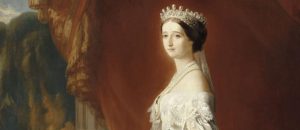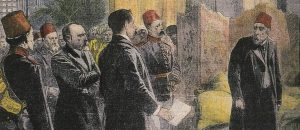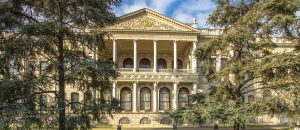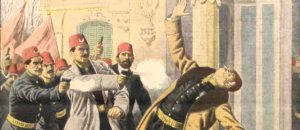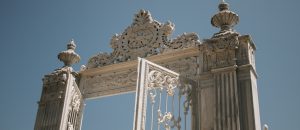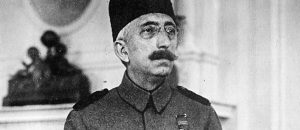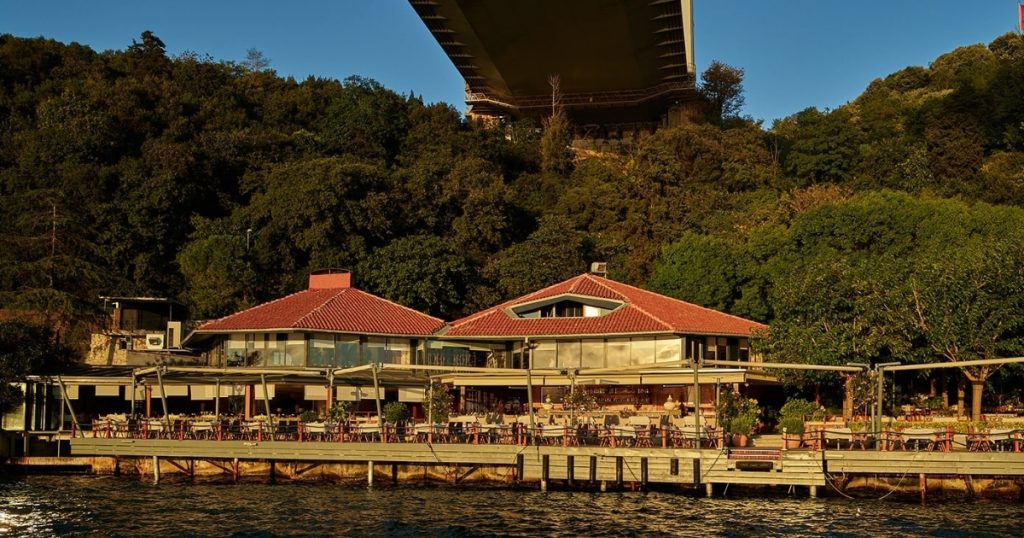The architecture of Dolmabahçe Palace is far more than a product of aesthetic taste; it is a deliberate and powerful diplomatic message sent to the 19th-century world. Built at a time when the Ottoman Empire was dubbed the “Sick Man of Europe,” this palace used the architectural language of the West to declare that the empire was still standing, modern, and ambitious. Every Baroque curve, every Neoclassical column, and every Rococo detail was a political move aimed at European capitals. This article will decipher the diplomatic strategy behind the architectural choices of Dolmabahçe Palace and explain why this magnificent structure is more than just marble.
An Architectural Challenge to the “Sick Man” Image
The primary reason for Dolmabahçe Palace’s European-style architecture was the desire to dismantle the “Sick Man” image attached to the Ottoman Empire in the 19th century. During this period of existential struggles like the Crimean War, the Empire was fighting a war not only on the battlefield but also in the realm of cultural and political perception. Sultan Abdülmecid and the sultans who followed him had to prove that the state was not weakening but, on the contrary, was modernizing through reforms and was an equal member of the European state system. It was at this point that architecture became a propaganda tool more powerful than words.
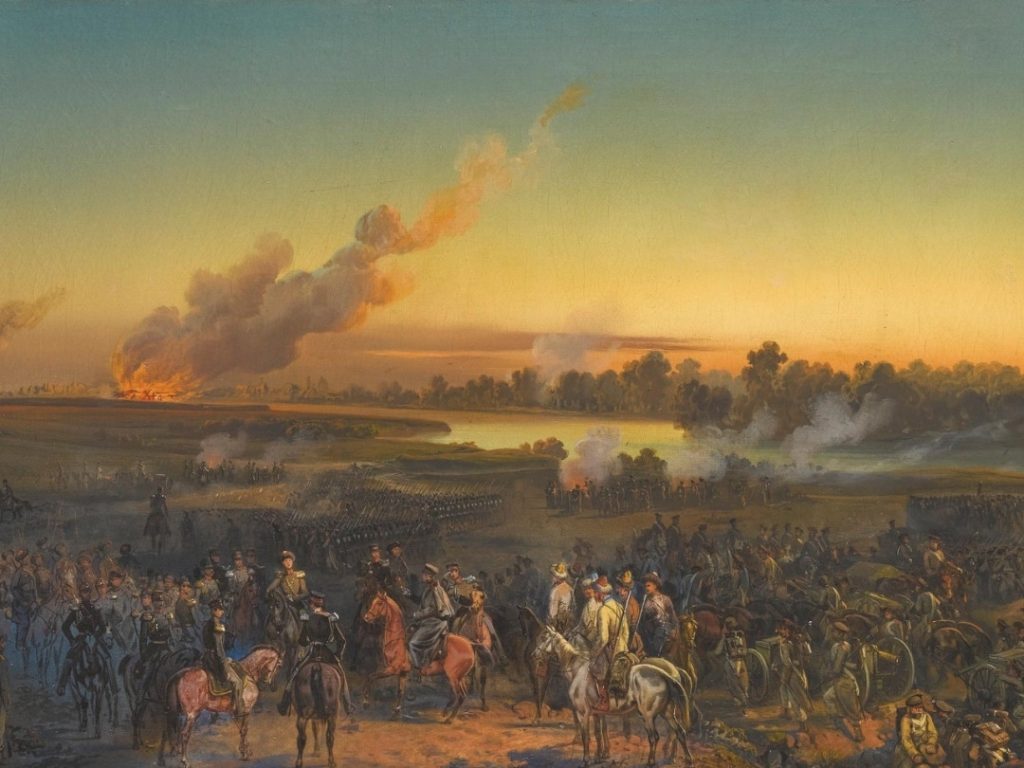
The traditional, inward-looking, and modest structure of Topkapı Palace was insufficient to convey this new and ambitious message. Europe’s perception of power and wealth was shaped by monumental palaces like Versailles, Buckingham, and Schönbrunn. Dolmabahçe was designed precisely to appeal to this perception. Its construction at the most visible point of the Bosphorus, directly greeting ships and diplomats arriving from Europe, is the clearest indicator of this architectural challenge. The palace, in effect, was saying, “We are here too, and we are playing your game by your rules.”
Delve Deeper into the Palace Chronicles
The story doesn’t end here. Our Journal is a living archive of the art, politics, and secrets of the late Ottoman era. Explore more articles and uncover the hidden narratives that shaped an empire.
READ MORE FROM THE JOURNAL →
The Palace’s Architectural Language: Why Baroque, Rococo, and Neoclassical?
The Baroque, Rococo, and Neoclassical styles used in Dolmabahçe were not random aesthetic choices but the alphabet of international diplomacy and the language of power of that era. For centuries in Europe, these styles were accepted as universal symbols of monarchy, wealth, order, and cultural superiority. The Balyan architects aimed to use these languages to position the Ottoman Sultan correctly in the minds of his European counterparts. Through these architectural languages, the palace conveyed three fundamental messages: power, elegance, and modern order.
Baroque and Rococo: The Language of Absolutism and Elegance
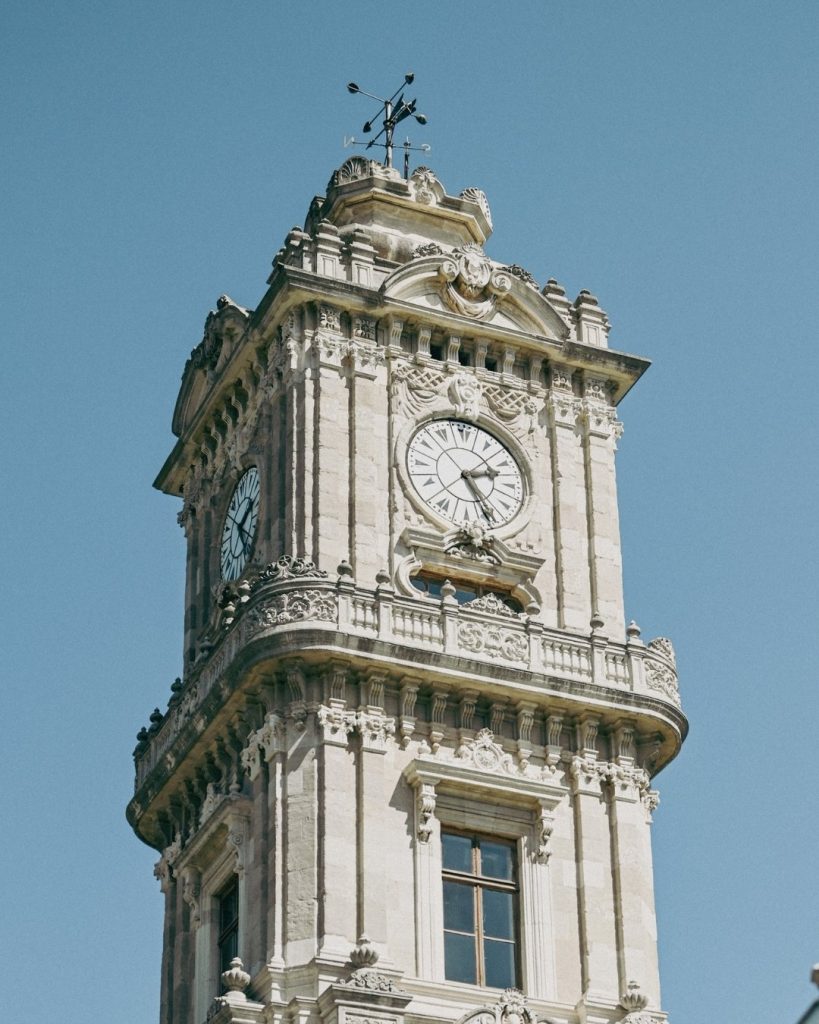
The Baroque and Rococo styles were adopted to bestow upon Dolmabahçe the power of European absolutist monarchies and the elegance of courtly life. The Baroque style, which reached its zenith with King Louis XIV’s Palace of Versailles, symbolized the ruler’s divine power by creating grandeur, splendor, and dramatic effect. Dolmabahçe’s enormous Ceremonial Hall (Muayede Salonu), with its gold leaf decorations and large-scale design, speaks this Baroque language of power. This was an atmosphere designed to impress a foreign envoy with the Sultan’s overwhelming power and wealth before they even entered his presence.
Rococo, as a more elegant and decorative extension of the Baroque, represented aristocratic refinement and luxury. The lighter, curved, and plant-based decorative motifs in the Harem and private living areas of the palace were intended to show that the Ottoman dynasty was not only powerful but also possessed refined tastes, much like European nobility. This was an image-building effort also supported by the Palace’s priceless collections.
Neoclassicism: The Symbol of Order and Rationality
Neoclassical elements were incorporated into the architecture to symbolize the modernization process initiated by the Ottoman State with the Tanzimat reforms and its transition to a rational state structure. Inspired by ancient Greek and Roman architecture, Neoclassicism is associated with symmetry, order, and logic. The flawless symmetry, ordered columns, and clean lines of Dolmabahçe Palace’s sea and land facades conveyed a clear message to Europe: “We are no longer an arbitrary government, but a state based on laws and rules, with a predictable and modern bureaucracy.” This was a subtle architectural move aimed at providing assurance to European states, especially in legal and commercial relations.
From Blueprint to Reality
The diplomatic messages of Dolmabahçe are not just concepts; they are carved into its walls, ceilings, and halls. Step inside and witness the architectural symphony that defined an empire’s final chapter.
EXPLORE THE ARCHITECTURE →
Comparison with Versailles: Two Palaces, One Message
The architecture of Dolmabahçe Palace, as a political tool, can be directly compared to the Palace of Versailles, as both were designed to centralize power and showcase prestige on the international stage. Versailles was built to consolidate France’s cultural and political dominance in Europe. The political role of the Palace of Versailles ->
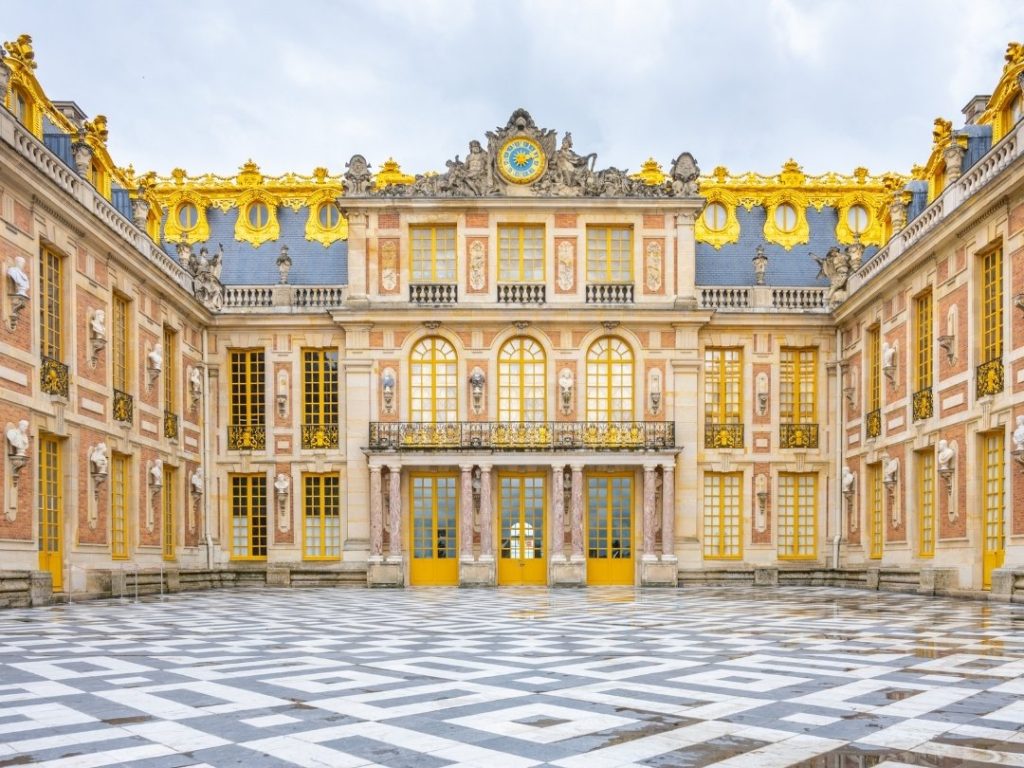
Similarly, Dolmabahçe was designed to show that the Ottoman Empire had not collapsed but was, in fact, being reborn and maintaining its place on the European stage. Both palaces served as a stage to display the absolute power vested in the person of the monarch.
Both structures share similarities in their massive ceremonial halls, symmetrical gardens (though more limited in Dolmabahçe), rich art collections, and plans that centralize state administration within the palace. However, the most significant difference that prevents Dolmabahçe from being a mere copy of Versailles is its reinterpretation of Western styles through a unique Ottoman synthesis. This makes Dolmabahçe’s message even more complex and powerful: “We speak your language, but we preserve our own identity.”
A Manifesto Carved in Marble
In conclusion, the architecture of Dolmabahçe Palace is a political manifesto woven from stone and marble. It was a strategic project designed in the challenging political climate of the 19th century to rebuild the Ottoman Empire’s reputation on the international stage. The deliberate use of Baroque, Rococo, and Neoclassical styles aimed to both demonstrate that the Empire was an equal player to European powers and to emphasize its commitment to modernization. Therefore, Dolmabahçe should be viewed not just as a palace, but as a living historical document whose walls are laden with messages of diplomacy and power.
Witness History’s Grand Stage
The political chess match of the 19th century is over, but its magnificent game board remains. Walk the corridors where empires clashed, see the halls that dazzled diplomats, and feel the weight of history. The message is still here, waiting to be read.
PLAN YOUR VISIT →









